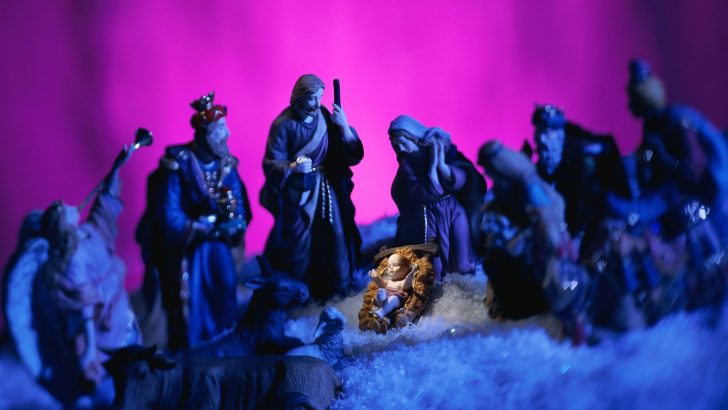Mindful Living
In the Church calendar the season of Advent starts on the fourth Sunday before Christmas; this year advent begins on Sunday, November 29. The word ‘advent’ derives from Latin, via the Old French word ‘to come’ and signals the coming of Jesus into the world, which we recall and celebrate each Christmas.
But we are not merely celebrating a singular event that happened over 2,000 years ago when Word became flesh, we are also celebrating the Good News that the spirit dwells within each one of us. The birth of the Word in the soul is a constant theme throughout the sermons of Meister Eckhart, the medieval theologian and mystic. Speaking about the birth of Christ in our hearts, he said: “That it should happen in me is what matters.”
Christians believe that we are made by God in his image and likeness”
The contemplative nun, Teresa of Avila, now a doctor of the Church, famously wrote that “Christ has no body now but yours. No hands, no feet on earth but yours. Yours are the eyes through which he looks with compassion on this world…” This reminds us that Christ’s action in the world today depends, to a significant extent, on each of us. The symbolism at the heart of the Nativity story – there was no room at the inn on the night of Jesus’ birth – poses an important question for us: how do we, in our daily lives, make room for Jesus in our heart?
Do our daily worries and concerns, our hurried, busy pace through life, our preoccupations with the many urgent tasks of family and work life – do they so occupy our attention that we leave little, if any, time or energy to listen to our heart, no time to nourish the development of the Spirit within? What do we do in practice to create a space where the birth of Christ can be renewed in us?
Christians believe that we are made by God in his image and likeness. The theologian Richard Rohr suggests that the image refers to our eternal essence in God (which cannot be increased or decreased), our true-self; while likeness refers to how each person embodies that inner divine image – in other words, how we live it out in our daily lives. While we are all created in the image of God, it is up to each of us to work on the likeness – to put on the mind of Christ, as it were (Philippians 2:5). Any practice that stills the body and the mind can become a doorway, a portal to this mystery deep within us. Christian Meditation, the practice of being still in body and mind – awakens the heart to this mystery and nourishes our spirituality.
While the Church defines prayer as ‘the raising of the mind and the heart to God’, the enduring emphasis, for ordinary people, has been on prayer as a mental activity. Christian meditation, the prayer of the heart, can help us to restore a necessary balance. It is a form of prayer that sets aside mental activity and simply opens the heart to God.
Build up the time slowly, starting with one minute and building up to four minutes by Christmas Day”
Christian Meditation is not intended to replace other kinds of prayer but is understood as adding a depth of meaning to all prayer. John Main, who recovered the practice of meditation for the ordinary person, wrote that meditation is about “a readying of our heart for the birth of Christ … we must let go of everything else, so that there is space for him in our hearts”.
As part of my work as a teacher of meditation, I lead a project where children in primary schools meditate together. In a video clip that is part of the in-service for teachers, two eight-year-old boys explain what meditation is about. As one explains that when we meditate, we sit up straight and still, the second boy adds “And we think of Jesus”; but the first boy smiles and says: “No, we be with Jesus, but we don’t think about him.” He truly understood what Christian Meditation was about.
Why not try meditation with your child or grandchild this advent? Simply take a few minutes every now and then to sit in silence and explain to your child that because the mind finds it hard to stop thinking, we give it something else to focus on. We repeat a single word, returning to it every time we realise our mind has started thinking again.
The word could be ‘Jesus’, or ‘Abba’, but many use the Aramaic word ‘Maranatha’ which means ‘Come, Lord’. We say it slowly and lovingly, as if it were four little words ‘Ma-ra-na-tha’. That’s all you need to know. We learn to meditate by doing it, not by thinking about it. So go ahead. Build up the time slowly, starting with one minute and building up to four minutes by Christmas Day. You might ask your child to imagine, like 12-year-old Alex does: “When I hear the chimes in meditation, I imagine Jesus is ringing my doorbell. I answer him and welcome him into my heart.”
After 40 years in the education sector Noel Keating was awarded a PhD for his research into the child’s experience of meditation and its spiritual fruits. Noel now leads, in a voluntary capacity, a project which offers free in-service to primary schools who may wish to consider introducing meditation as a whole-school practice. Noel is author of Meditation with
Children: A Resource for Teachers and Parents.



